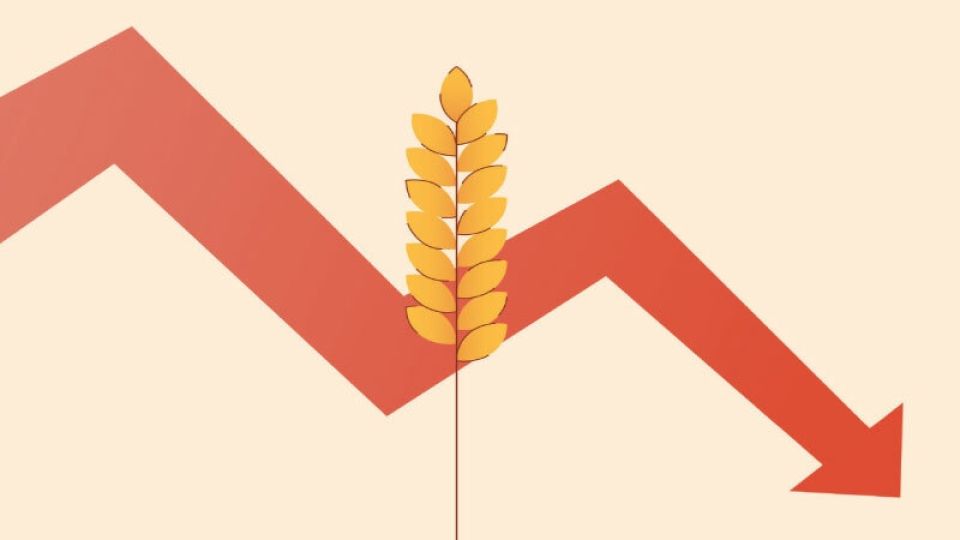April 29, 2025
ISLAMABAD – In late March 2025, the Pakistan Bureau of Statistics released the country’s economic growth figures for the second quarter (October-December) of FY25. The data painted a worrying picture: the agriculture sector grew by just 1.1 per cent. The first quarter was even worse, barely registering a growth rate of 0.74pc (revised figure). That is a massive fall from FY24, when agriculture posted a robust 8.17pc and 5.82pc growth in Q1 and Q2, respectively.
Interestingly, in Q2FY25, the livestock subsector, which accounts for nearly 60pc of the agriculture sector, grew by an impressive 6.51pc — the highest for any quarter over the last 10 years. This performance appears somewhat surprising, as neither the government nor the private sector undertook any significant intervention.
Despite this surge in livestock, what is dragging the agriculture sector down? Crops — long considered the backbone of Pakistan’s agriculture — are in deep trouble. The crop subsector posted a negative growth of 6.57pc in Q1 and 5.38pc in Q2. This stands in stark contrast to last year’s double-digit positive growth in the same quarters — 16.07pc and 10.12pc, respectively.
Compared to the previous year, cotton plunged by 30.7pc, dropping from 10.22 million bales to 7.08m bales, and maize fell 15.4pc, from 9.74m tonnes to 8.24m tonnes. Likewise, rice dipped slightly by 1.4pc, sliding from 9.86m tonnes to 9.72m tonnes, while sugarcane shrank by 2.3pc, from 87.64m tonnes to 85.62m tonnes.
This dramatic reversal from bumper harvests in FY24 to a worrying slowdown just a year later signals more than just statistical fluctuation. It reflects mounting stress from multiple directions. However, what primarily explains this boom and bust? The short answer: liquidity — hard cash in farmers’ hands.
In 2023, wheat, Pakistan’s principal food crop, cultivated on over 23.7m acres by more than 6m farmers, fetched Rs3,900 per 40kg. With solid returns in hand, farmers confidently reinvested in Kharif crops like rice, maize, and cotton. They purchased expensive hybrid seeds, applied optimal fertiliser doses, and operated even high-cost diesel-operated tubewells to meet irrigation water needs. The result: bumper yields.
Then came 2024. The Punjab government, despite announcing a support price of Rs3,900, failed to procure wheat. Farmers were left to sell their crop at distress prices — between Rs2,400 and Rs2,700 — well below the government’s own estimated production cost of Rs3,200. To make matters worse, in July 2024, the Punjab government imposed district-specific price caps ranging from Rs2,800 to Rs3,050 per 40kg.
This policy left farmers cash-strapped, which triggered a domino effect — a chain reaction that affected the subsequent crops. Due to liquidity issues, farmers could not apply inputs, especially fertilisers, in the required quantities at the right time. The impact is now evident in the dismal Q1 and Q2 figures of FY25. Wheat has rightly earned its title as the driving force of Pakistan’s agriculture sector and rural economy, and when it stalls, the entire sector suffers.
The wheat crisis has deepened in 2025 due to government policy failures at multiple levels. Without meaningful reforms aimed at strengthening agricultural credit, building private sector capacity, improving farmers’ grain holding capacity, and ensuring effective regulation of the commodity market, another year of poor growth in 2025-26 appears all but certain.
Crops are becoming increasingly vulnerable to climate change. In 2024, the yields of maize, rice, cotton, and sesame were affected by erratic rainfall, heatwaves, and rising temperatures. Farmers lack both the capacity and access to climate-smart technologies needed to cope with the escalating threat of climate change. As a result, Pakistan’s agriculture sector has failed to adopt even basic adaptation and mitigation measures like high-yielding, climate-resilient seeds.
The widespread availability of substandard and unapproved seeds, particularly for cotton and rice, emerged as a major concern in 2024. These seeds had low germination rates and lacked resilience against pests and the growing impacts of climate change. Collectively, these factors ultimately led to lower yields.
In Q1 and Q2 of FY25, farmers faced irrigation challenges on three fronts. First, canal water availability from April 1 to Sept 30 dropped by 3.4pc — from 61.85 million acre-feet (MAF) in 2023 to 59.75 MAF in 2024. This shortfall was relatively more intense and damaging in some rice- and cotton-growing areas of Sindh. Second, rainfall between September and December 2024 was 40pc below normal, triggering near-drought conditions across much of the country. Third, the electricity tariff for tubewells — effective from July 2024 — rose to a record high, about 20pc above 2023 levels. This sharp increase further constrained cash-strapped farmers’ ability to irrigate.
This year, the water situation is even worse. With declining reservoir levels, farmers are unlikely to receive sufficient water, which will shrink crop acreage and suppress yields further. These impacts will likely be reflected in the agricultural performance of FY26.
In conclusion, Pakistan’s crop sector is gradually losing its competitiveness due to rising production costs, worsening water shortages, and a policy framework that is misaligned with the farmers’ real issues. The government’s piecemeal incentives — such as subsidised equipment — may help a few thousand but will be unable to address the deeper structural challenges of the sector. What’s urgently needed is a long-term, strategic vision aimed at boosting productivity and building a resilient agriculture sector.


